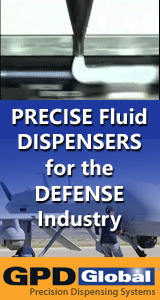Printed Circuit Board Assembly & PCB Design Forum
SMT electronics assembly manufacturing forum.
- SMTnet
- »
- Electronics Forum
- »
- Lo Behold Voids!!!!
Lo Behold Voids!!!!
![]()
![]() hi everybody,
We've been doing some studies on assembly o...
- May 20, 1999
by
hi everybody,
We've been doing some studies on assembly o...
- May 20, 1999
by
![]()
![]() | hi everybody,
| We've been doing some studies on assemb...
- May 20, 1999
by
davef
| hi everybody,
| We've been doing some studies on assemb...
- May 20, 1999
by
davef
![]()
![]()
![]() Dave,
i tried reflowing bare boards with only solder prin...
- May 21, 1999
by
Dave,
i tried reflowing bare boards with only solder prin...
- May 21, 1999
by
![]()
![]() | Dave,
| i tried reflowing bare boards with only solder ...
- May 21, 1999
by
davef
| Dave,
| i tried reflowing bare boards with only solder ...
- May 21, 1999
by
davef
![]()
![]()
![]() | Dave,
| i tried reflowing bare boards with only solder ...
- May 21, 1999
by
davef
| Dave,
| i tried reflowing bare boards with only solder ...
- May 21, 1999
by
davef
![]()
![]()
![]() hey dave...
Abra Ca Babra ...Tony Primavera is my boss he...
- May 21, 1999
by
hey dave...
Abra Ca Babra ...Tony Primavera is my boss he...
- May 21, 1999
by
![]()
![]() hello every body !!
We are assembling a new product with ...
- Oct 03, 2001
by
Roque
hello every body !!
We are assembling a new product with ...
- Oct 03, 2001
by
Roque
![]()
![]()
![]() Your component is probably EPTSSOP [Exposed Pad Thin Shrink ...
- Oct 03, 2001
by
davef
Your component is probably EPTSSOP [Exposed Pad Thin Shrink ...
- Oct 03, 2001
by
davef
![]()
- SMTnet
- »
- Electronics Forum
- »
- Lo Behold Voids!!!!







